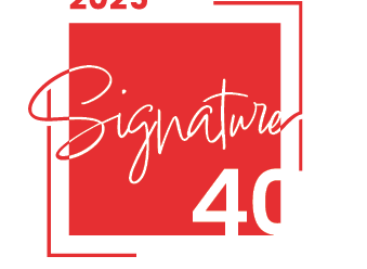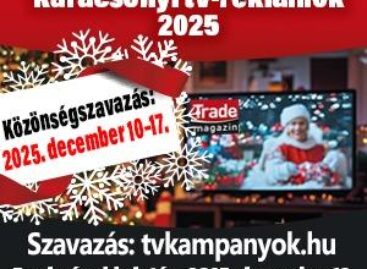A touch of the future
The futuristic GINNT Expo was held on 10-11.June. The “Eat the code!” campaign conducted by the main sponsor GS1 and Kitchen Budapest had been highly successful in promoting the event. Candy wrapped in 2D code was handed out to the target group by hosts and hostesses dressed in 2D T-shirts. By taking a photo of the code and reading it with the help of a free software, participants got the name of the web site supporting the promotion. The code composed of more than 4 000 characters is easy to read and has been used in several sectors of industry for years. Playful functions are also increasingly popular as demonstrated by the researchers of KiBu at their stand where 2D codes were made from lego, pearls and textile panels fitted with velcro. The biggest success however, was the 2D code which can be ironed on T-shirts by anybody. As Balázs Debreczeny from GS1 Magyarország pointed out, the organisation formed as the result of a fusion between EAN and UCC in 2005 has become a true service provider. They are planning to establish a 400 square meter innovation showroom where the entire supply chain becomes visible and which can also function as a conference centre and a research lab, offering a wide range of services. Such a facility would offer another possibility for improving the competitiveness of Hungarian companies. By setting up the „CODE – Center Of Developement & Education” GS1 would emphasise the fact that it is offering products and services which play an essential role in improving the efficiency of the supply chain. The Internet is becoming a natural environment for an increasing number of people. Living and working on line has become a basic necessity. The ROOL Bázis system developed by Rool Informatika Kft allows a wide range of internal on line operations to be performed. A domestic on line product catalogue has also been complied. Products can be entered into the catalogue free of charge using the roolnet Start system. At first glance, the colour screens of the scales were the most attractive feature of the Laurel stand. The automatic product identifier recommended for fruit and vegetable departments helps customers in finding their product by selecting 4 photos. A double screen version is recommended for use in deli counters, with detailed info about the product being scaled displayed on the screen facing customers. The screen can also be used for advertising products consumed with the product on the scale. 2nd generation electronic shelf labels are also displayed. Cheaper E-paper versions hold less information but consume less energy than LCD based models, which can display photos and logos. The “wine guru” is an automatic sommelier machine with a touch screen. Portable „self scanning” devices are also displayed which allow customers to scan products on their own and collect data on consumer habits at the same time. Attila Lovász spoke about their info system named KerInfo which allows sales data to be broken down to the level of individual stores and items. The increasing popularity of ECR has generated interest in this solution, as it allows details which have remained unknown so far to be uncovered. Extensive research into document security has been utilised by Állami Nyomda in the field of food safety. In order to prevent the re-labelling of food products, they have developed a multilevel solution. The special solvent-sensitive material used for the print indicates any attempt to manipulate the label, while the dye contains a special additive which can be detected by a special, hand held device called the “rubber”. They also have RFID tags equipped with heat sensors which log temperatures throughout the supply chain. Participants were invited to join an exciting card game by Odin, an expert in RFID. Antennas were concealed under the cards painted on the table which allowed the game to be followed on a screen. Things fitted with an RFID chip can be tracked in the same way. The company in charge of the registration, ticketing and payment tasks related to GINNT Expo performed well in the opinion of visitors and the organiser as well. Mobile ticketing allows super-secure identification of visitors, but is used most frequently in communication and promotional campaigns. According to János Basilides country manager, this service is an ideal tool for interactive marketing and can also help in developing a data base or loyalty building by sending individualised offers to regular customers. It can also be used for mobile tagging in brand building. The application developed by Dimoco and Idom 2000 was awarded the GINNT EXPO Innovation Prize 2009. This allows a digital signature and a time stamp to be included in the 2D DataMatrix code.
Related news
Related news
Signature 40 – the region’s new common language: An interview with founders Márton Nagy and Ádám Vaszary on the new dimension of the Signature Platform in 2026
🎧 Hallgasd a cikket: Lejátszás Szünet Folytatás Leállítás Nyelv: Auto…
Read more >Superbrands celebrated again in 2025
🎧 Hallgasd a cikket: Lejátszás Szünet Folytatás Leállítás Nyelv: Auto…
Read more >(HU) Karácsonyi tv-reklámok 2025 – indul a közönségdíj szavazás
🎧 Hallgasd a cikket: Lejátszás Szünet Folytatás Leállítás Nyelv: Auto…
Read more >



